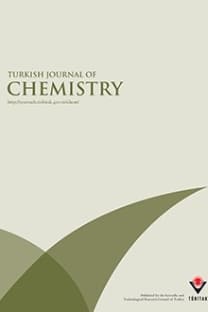Acid-free synthesis of S-nitrosothiols at neutral pH by shock-freezing in liquid nitrogen
LC-MS, nitric oxide, nitrite, S-nitrosothiols
Acid-free synthesis of S-nitrosothiols at neutral pH by shock-freezing in liquid nitrogen
LC-MS, nitric oxide, nitrite, S-nitrosothiols,
___
- × 1 mm internal diameter, 3.5 µm particle size) at 35◦C. Electrospray ionisation in the positive mode (ESI+) was used with nitrogen (600 ◦
- C, flow rate of 1000 L/h) as the desolvation gas. The capillary voltage was set to 0.8 kV and the ion source was kept at 150 ◦
- C. Argon served as the collision gas (0.13 mL/min, 1.8× 10 −3
- mbar). System operation, data acquisition, and data processing were accomplished with the software MassLynx V4.1 from Waters. 4. Conclusions
- In summary, aqueous solutions of RSNO are best prepared by acidifying equimolar amounts of nitrite and thiols. Here an alternative laboratory method is described for the acid-free preparation of RSNO in sodium phosphate buffer of neutral pH by shock-freezing in liquid nitrogen. The method provides pH-neutral buffered solutions of
- ISSN: 1300-0527
- Yayın Aralığı: 6
- Yayıncı: TÜBİTAK
Ravibabu VELPULA, Janardhan BANTHU, Rajitha GALI, Rajitha BAVANTULA, Yakaiah SARGAM
Mehmet SÖNMEZ, İsmet BERBER, Feyza YILMAZ, Tuğba TOK TAŞKIN, Hatice Gamze SOĞUKÖMEROĞULLARI
VELİ ŞİMŞEK, LEVENT DEĞİRMENCİ, KIRALİ MÜRTEZAOĞLU
ZAHOOR HUSSAIN FAROOQI, NAGHZA TARIQ, ROBINA BEGUM, SHANZA RAUF KHAN, ZAFAR IQBAL, ABBAS KHAN
Synthesis and characterization of halogen-containing aryl amide polymer-clay nanocomposites
Acid-free synthesis of S-nitrosothiols at neutral pH by shock-freezing in liquid nitrogen
DIMITRIOS TSIKAS, Dimitrios TSIKAS, ANKE BÖHMER, ARNE TRETTIN, ARSLAN ARINÇ KAYAÇELEBİ
Na LI, Chunwei YU, Yuxiang JI, JUN ZHANG
Somayeh GHAMARI, Massomeh GHORBANLOO, Hidenori YAHIRO
Synthesis and biological evaluation of novel fused triazolo[4,3-$a$] pyrimidinones
IKHLASS ABBAS, SOBHI GOMHA, MOHAMED ELNEAIRY, MAHMOUD ELAASSER, BAZADA MABROUK
